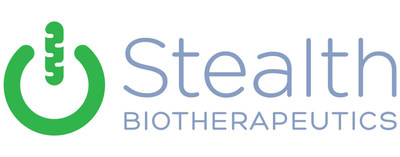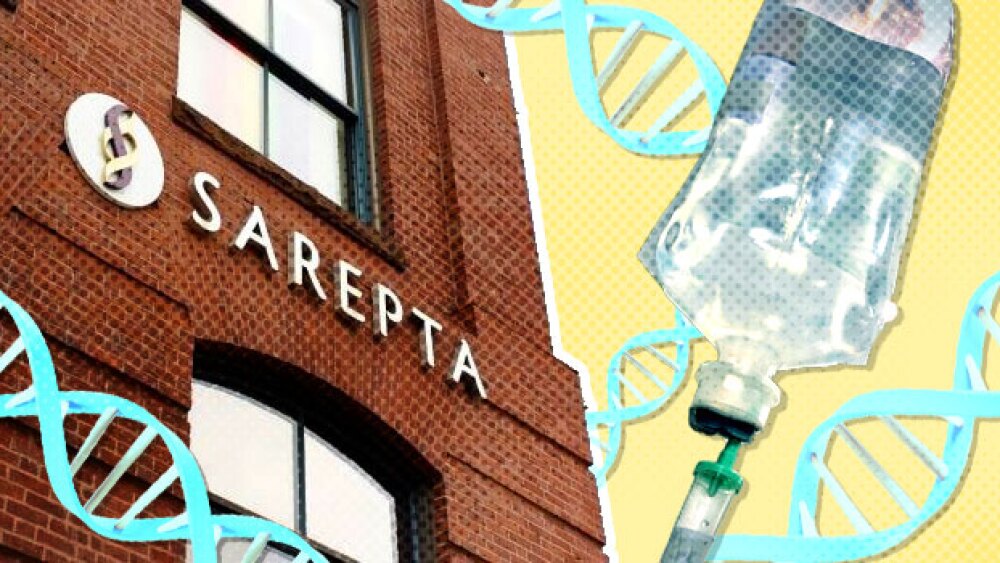Stealth BioTherapeutics Inc. provided key takeaways from a presentation by Reenie McCarthy, the Company’s Chief Executive Officer, at the World Orphan Drug Congress USA, held May 23-25 in Washington, D.C.
New incentives and differentiated regulatory pathways proposed to reduce health inequities faced by ultra-rare disease communities
NEEDHAM, Mass., June 14, 2023 /PRNewswire/ -- Stealth BioTherapeutics Inc. (the "Company" or "Stealth BioTherapeutics"), a clinical-stage biotechnology company focused on the discovery, development, and commercialization of novel therapies for diseases involving mitochondrial dysfunction, today provided key takeaways from a presentation by Reenie McCarthy, the Company's Chief Executive Officer, at the World Orphan Drug Congress USA, held May 23-25 in Washington, D.C. In the presentation, entitled "Opportunities and Challenges in Ultra-Rare Drug Development," McCarthy referenced the Company's Barth syndrome development program as a case study to highlight the need for new incentives and differentiated ultra-rare regulatory pathways to reduce health inequities faced by patients with ultra-rare diseases. Barth syndrome is an ultra-rare disease that affects approximately 250 people worldwide. The Company recently announced its partnership with Pharmanovia to advance its Barth syndrome program in Europe and MENA.
Experience the full interactive Multichannel News Release here: https://www.multivu.com/players/English/9176651-stealth-biotherapeutics-highlights-ultra-rare-disease-drug-development/
"We stand by our commitment to the Barth syndrome community to deliver the first potential treatment option for this ultra-rare and life-threatening cardio-skeletal disease," said McCarthy. "We have experienced firsthand the unique clinical, regulatory, and financial challenges of developing new medications for ultra-rare diseases. By sharing our learnings with regulators, policymakers, other drug developers and patient advocacy, we hope to ensure that people living with ultra-rare diseases can have a fighting chance at treatments that enable them to live healthier lives."
Key points from the presentation included:
- More than 90 percent of rare diseases do not have a single FDA-approved treatment.1 New incentives for ultra-rare diseases2 may be needed: Wall Street views rare diseases that affect fewer than 10,000 individuals (for small molecules) or fewer 1,000 individuals (for gene therapies) as uninvestable.3
- Small biotechnology companies remain more active in ultra-rare drug development than large pharmaceutical companies, increasing funding uncertainty and need for incentives particularly in challenging capital markets4.
- FDA regulations do not distinguish between rare and ultra-rare diseases in applying regulatory flexibility despite the significantly increased risk of Type 2 error – the risk of not approving an effective drug – in ultra-rare diseases. Perspectives on flexibility and review pathways can vary between centers, divisions, and even clinical reviewers. Decisions on when and how to apply flexibility are often made ad hoc5.
- Strong and unrelenting patient advocacy support is critical to ultra-rare development efforts.
- The accelerated approval pathway for ultra-rare diseases presents opportunities, challenges, and the potential for positive change.
Given the challenges faced by ultra-rare disease drug developers and the significant unmet need faced by patients living with these conditions, innovative incentives and policies should be put in place to motivate industry support of ultra-rare therapeutic development. Reforms proposed during the presentation included:
- The FDA should define a patient population threshold for ultra-rare diseases that entitles these diseases to maximum regulatory flexibility, reducing likelihood of Type 2 error without setting a precedent for larger diseases. Regulatory flexibility measures for ultra-rare diseases may include:
- Not requiring ultra-rare drugs approved under Subpart H (accelerated approval) to have a post-marketing study underway or fully enrolled prior to approval. In ultra-rare diseases, this requirement further stresses the already challenging value proposition for ultra-rare disease drug development by requiring significant at-risk investment in a post-marketing trial predicated on uncertain regulatory approval and can also cause an approval delay of more than 2.5 years.
- Utilizing intermediate clinical endpoints, which can be measured earlier than irreversible morbidity or mortality, to support post-marketing efficacy for drugs approved under the accelerated approval pathway.
- Embracing acceptability of real-world evidence (including registries) and natural history controls to support ultra-rare approvals and post-marketing commitments.
- The FDA's Center for Drug Evaluation and Research (CDER) Accelerating Rare Disease Cures (ARC) initiative should be expanded to improve cross-Agency oversight and consistency of ultra-rare decision-making.
- The priority review voucher incentive should be expanded to ultra-rare diseases as a joint patient-taxpayer-pharma solution to rationalize more investment in our most vulnerable patients.
"With 85 percent of affected individuals dying before the age of five, the Barth syndrome community is keenly aware of the severe cost of delaying treatment or denying an approval," stated McCarthy. "For these individuals – and those with other ultra-rare diseases – we need creative solutions to drive innovation."
About Barth Syndrome
Barth syndrome is an ultra-rare genetic condition characterized by cardiac abnormalities often leading to heart failure and reduced life expectancy, exercise intolerance, muscle weakness and fatigue, recurrent infections, and delayed growth. Barth syndrome occurs almost exclusively in males and is estimated to affect one in 200,000 to 400,000 individuals worldwide. There are currently no FDA- or EMA-approved therapies for patients with Barth syndrome.
About Stealth
The Company is a clinical-stage biotechnology company focused on the discovery, development, and commercialization of novel therapies for diseases involving mitochondrial dysfunction. Mitochondria, found in nearly every cell in the body, are the body's main source of energy production and are critical for normal organ function. Dysfunctional mitochondria characterize a number of rare genetic diseases and are involved in many common age-related diseases, typically involving organ systems with high energy demands such as the eye, the neuromuscular system, the heart and the brain. The Company has a deep pipeline of novel mitochondria-targeted compounds under evaluation as therapeutic product candidates.
Media Relations
Anna Stallmann Communications
Anna Stallmann
anna@annacomms.com
|
______________________ |
|
1 NORD Avalere Report: ORPHAN DRUGS IN THE UNITED STATES: An Examination of Patents and Orphan Drug Exclusivity, 2021. |
|
2 FDA does not define "ultra-orphan"; in Europe, it is considered to apply to diseases with a prevalence of <1 in 50,000, National Institute for Clinical Excellence. NICE Citizens Council Report Ultra Orphan Drugs. London, NICE, 2004. |
|
3 Ritu Baral, Testimony at 2 28 2023 Rare Disease Congressional Caucus (at 21:50). |
|
4 Yates, Hinkel, Clin Transl Sci. 2022. |
|
5 Isakov et al., MIT.edu, 2016; Janiaud et al., Annals of Internal Medicine, 2021. |

SOURCE Stealth BioTherapeutics Inc.




